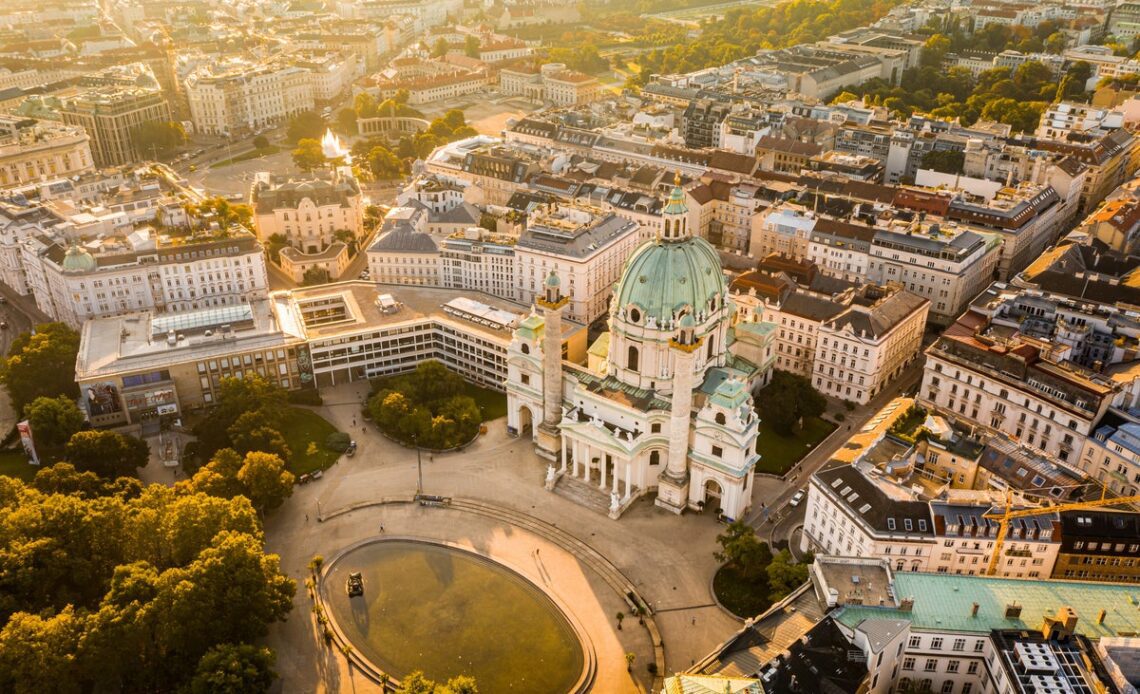Traditional valley villages hugged by the mighty Alps neighbour lake districts filled with the glacier waters of the snow-capped peaks; urban centres showcase a history spanning the ancient Romans to the royal Habsburgs. Visit for high adrenalin adventures in a country half-draped in countryside, or city-hop from the world’s most liveable capital (we’re looking at you, Vienna) to musical and mountain-side metropolises.
Current travel restrictions and entry requirements
Travellers arriving in Austria no longer need to present “3-G” proof (Getestet, Geimpft, Genesen / Tested, Vaccinated, Recovered). Austria’s nine federal provinces have their own rules – across all, FFP 2 masks are no longer mandatory when in shops and using public transport, with exceptions in Vienna, where the use of FFP 2 masks remains compulsory on public transport and in pharmacies. Children under six don’t have to wear masks, and those aged six to 13 can wear a regular mask.
Best time to go
Christmas markets open by mid-November, with those in Vienna and Salzburg the biggest and most popular. Skiers can enjoy the Alpine pistes from November to April – although year-round skiing is possible at the Hintertux Glacier in Tyrol.
Cities go quiet in the summer months as locals head off to the lakes and the cooler altitudes of the peaks. Festival weeks covering gastronomy and the arts typically occur in spring (May/June) and autumn (September/October) – a prime time to travel for Austria’s cultural calendar and a temperate climate in which to enjoy wine hikes and Alpine adventures.
Top regions and cities
Vienna
More than its Habsburg heritage, monuments like the Hofburg Palace, Spanish Riding School, Stephandom and Schloss Schönbrunn are a top draw. Historic charm and 100 or more museums are complemented by the city’s green credentials, including 13 hiking paths through surrounding vineyards and woodland, fairground time in the ‘green lung’ of Prater Park and Donaukanal (Danube Canal) beach bar hangouts. Venture into the bohemian 6th, 7th, 8th, and 9th districts that circle Vienna’s Unesco World Heritage-listed historic centre, where independent and boutique businesses and a booming gastronomy scene are breathing new life into lesser-frequented corners of the city.
Wachau Valley
Bike, hike, and wine taste your way through a Unesco World Heritage-accredited stretch of the River Danube. It’s a one-hour train ride from Vienna to Krems, where you can embark on a scenic…
Click Here to Read the Full Original Article at The Independent Travel…
